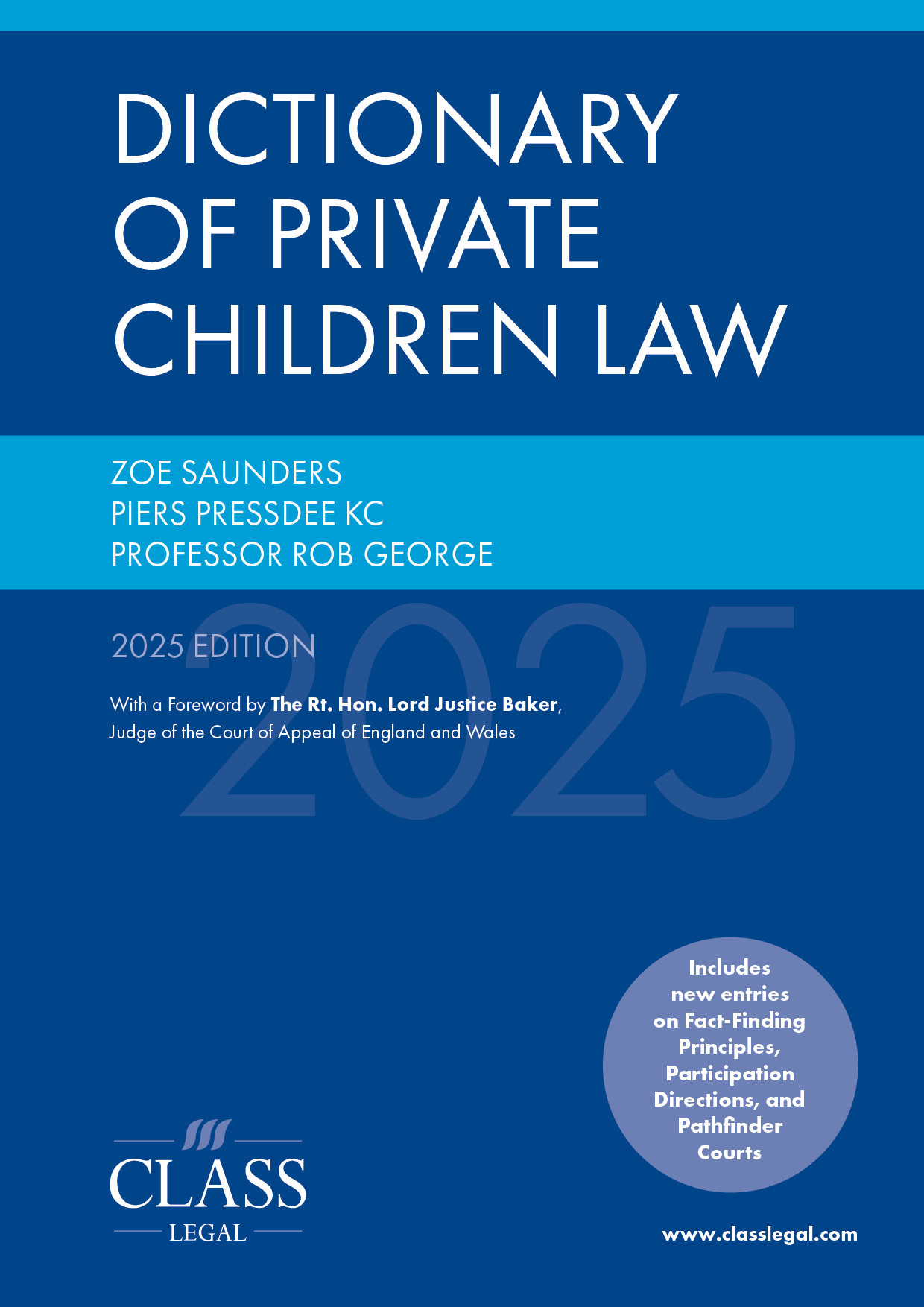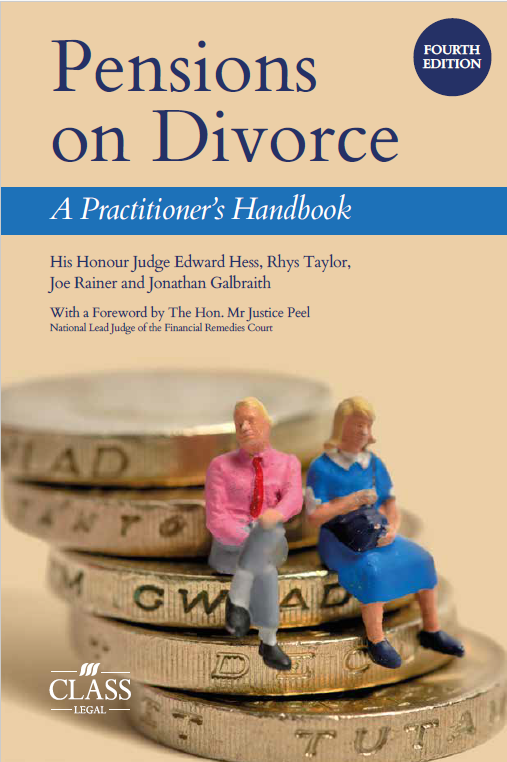
Financial Remedies Case Round-Up: October to December 2022
Published: 27/03/2023 09:55

A sad tale’s best for winter, so we start with October’s Supreme Court decision in Guest v Guest [2022] UKSC 27. As with other leading estoppel cases, it concerned a farm and a promise of inheritance, in reliance on which the claimant undertook decades of work on the farm. The claimant in Guest was the son of the farm owners, and he had worked for decades on what the first instance judge found was the promise of inheritance. Such work was paid, but below the level that the son would have been able to obtain by working at another farm. Sadly, the parents and son could not agree on modernisation of the business, and this led to the son being disinherited. The issue before the Supreme Court was not whether his estoppel claim succeeded, but what the remedy should be. Should the remedy compensate for loss, such as the amount of lost income, or should it otherwise remedy the unconscionability; and, if the latter, what did that look like? The court was split, with the majority finding that the outcome is to remedy the unconscionability. However, the promise in this case was of future inheritance, and no one had yet died. The court therefore held that the parents had a choice: they could place the farm into a trust for the benefit of the son, or they could buy him out now, with a discount for accelerated receipt. The minority would have compensated for loss of income, but as the academic Brian Sloan has noted on Twitter, there is ‘effectively zero engagement’ between the majority and minority judgments. However, the case is already leaving its mark with two cases referencing it being decided almost immediately.
The first of these was December’s Hudson v Hathaway [2022] EWCA Civ 1648, a much-needed Court of Appeal decision on whether detriment remained a requirement of a constructive trust. In each issue of the Financial Remedies Journal, we identify one case which is a ‘must-read’ for practitioners. Hudson is our Mostyn Award winner for this issue. Enormous litigation risk is involved in Trusts of Land and Appointment of Trustees Act 1996 (TOLATA) cases, both relating to the quality of the evidence and to uncertainties in the law. Hudson’s decision on detriment was therefore not before time, as there had been uncertainty post-Jones v Kernott [2011] UKSC 53 and Stack v Dowden [2007] UKHL 17 as to whether those cases’ failure to consider detriment explicitly meant that detriment was not needed; and/or whether the fact those were joint names cases was relevant to this.
The case concerned an unmarried couple who communicated with one another post-separation in writing with an evidentially convenient degree of clarity. They agreed that the respondent would retain the family home (which was in joint names) for herself and their children, and the claimant would retain his shares and pension. In reality, the respondent had no claim to his pension and at its highest her claim in respect of the claimant’s shares was a claim that a constructive trust had arisen in respect of them. The parties effected this agreement but some years later the claimant sought sale of the house and an equal share of the proceeds under TOLATA. The court held that detriment had been so obvious in Stack and in Jones that the Supreme Court had not needed to address it, and that its explicit approval in both cases of Grant v Edwards [1986] 3 WLR 114, a case which involved detrimental reliance, implied its continued acceptance of it as a prerequisite. The Court of Appeal also drew on Guest, observing that it is the detriment which makes the agreement or promise enforceable.
Hudson is useful for other reasons too. Although not argued at first instance or at first appeal to Kerr J, the Court of Appeal asked for arguments on the effect of section 53 of the Law of Property Act 1925, aka the bane of law students’ lives. Section 53 provides that an interest in land can be created or disposed of by a signed document; unlike a legal interest, a deed is not required. In Hudson, the applicant’s emails to the respondent expressly giving her the house were in writing and signed, the court noting that there was ‘a substantial body of authority to the effect that deliberately subscribing one’s name to an email amounts to a signature’. This meant that the applicant had unwittingly complied with section 53 and thereby released his interest in the property to the respondent (as section 36(2) says is possible). Two thoughts come to mind on reading this part of the judgment. First, there is the feeling of worry that a client might inadvertently do the same thing with an ill-judged impetuous email. Secondly, there is the feeling that the Court of Appeal has done what Macleod v Macleod [2008] UKPC 64 did with section 35 of the Matrimonial Causes Act 1973 and suddenly reminded everyone that there is a bit of statute law that we overlook more than we should.
Fear not. This is not the cohabitees’ remedy journal: if it was, we would not stretch to three issues per year. Before we consider financial remedies, however, we need to divert first to marriage law, and in particular a brief flurry of cases concerning the validity of a purported ceremony. We summarise such cases because they are, ultimately, about the money, as a void marriage, even if void ab initio, opens the door to a financial remedies order, whereas a non-qualifying ceremony (formerly called a ‘non-marriage’) does not. Prior to Akhter v Khan [2020] EWCA Civ 122, the law was in a state of some confusion about where the dividing line lay and it is now much clearer. However, there were still issues that needed to be resolved. Parveen v Hussain and the Queen’s Proctor [2022] EWCA Civ 1434 involved a talaq divorce recognised in Pakistan but not entitled to recognition under the Family Law Act 1986, as it was a transnational divorce (Re Fatima [1986] 1 AC 527). W’s subsequent marriage in England would therefore be bigamous. Yet formal validity issues, which include capacity to marry, are governed by the country of ante-nuptial domicile and the wife’s ante-nuptial domicile was Pakistan. The Court of Appeal decided against a general rule, but held that a court should give weight, and probably significant weight, to the general policy objectives of seeking to uphold the validity of a marriage.
Moving to financial remedies themselves, we have several useful decisions. In P v P [2022] EWFC 158, DDJ David Hodson considered the costs position where the court was concerned with the sharing principle yet one party’s costs were significantly higher than the other. The effect of no order as to costs in such a situation would be for the more frugal party to indirectly subsidise the costs of the other. He concluded that the costs spent from marital resources could be treated like an advance of partnership funds from a business, and added back, albeit (as there was no wanton dissipation in that case) the add-back was not intended to be punitive. The almost simultaneous decision of HHJ Hess in YC v ZC [2022] EWFC 137 led to the adding back of a proportion of the wife’s grossly disproportionate expenditure, the judge being more critical of the expenditure levels in that case. (Incidentally, YC v ZC also reminds us that there are pensions out there with guaranteed annuities rates near the 10% mark and that it is essential to identify this – the pensions adviser in this case had not done so – and to be aware that an externally transferred pension credit loses the guaranteed annuity rate.)
Readers will be aware of Mostyn J’s comments as a deputy High Court judge in GW v RW [2003] EWHC 611 (Fam), and later in CB v KB [2019] EWFC 78, that the starting point for a top-up of child maintenance above the Child Maintenance Service limits should ‘almost inevitably’ be based on the percentage applicable to high earners under the child support rules, as though the cap did not exist. In CMX v EJX (French Marriage Contract) [2020] EWFC 136, Moor J declined to apply this starting point while acknowledging ‘the beauty’ of it, referring to its significant disadvantages depending on the number of children and its lack of connection to actual budgetary need.
On the issue of child maintenance budgetary needs, at the latest hearing in the Collardeau-Fuchs case, reported at [2022] EWFC 135, Mostyn J drew a distinction between those cases in which child maintenance was front and centre, such as claims under Schedule 1 to the Children Act 1989, and those cases where it was a subsidiary issue to a financial remedy claim for the benefit of a spouse. In the former, the child’s budgetary needs, and those of their carer in their capacity as carer, are subject to careful scrutiny and application of the case-law that has arisen in respect of Schedule 1, whereas in the latter they are not. Where an application is brought under the Matrimonial Causes Act 1973 for maintenance for a child in a situation in which the parent with care has no claim for their own benefit that is being adjudicated at the same time (such as where a nuptial agreement excludes it), the court, Mostyn J argues, should take the careful approach found in Schedule 1 cases.
Michael Allum discusses these two cases further in a blog for this journal’s website (‘Child Maintenance Outside the Child Maintenance Service: Where Are We Now?’, 12 December 2022, available at https://financialremediesjournal.com/content/child-maintenance-outside-the-child-maintenance-service-where-are-we-now.79e743f8ed5c4c5894980dcab7a466b3.htm).
AIC Ltd (Respondent) v Federal Airports Authority of Nigeria (Appellant) [2022] UKSC 16 is not a case name one would assume to be relevant to the family field. However, it deals with what a judge should do when, shortly after oral judgment but before a formal written minute of the order has been sealed, one of the parties asks the judge to reconsider the judgment and the order. Distinguishing Re L (Children) (Preliminary Finding: Power to Reverse) [2013] UKSC 8, on the grounds that the welfare principle makes children cases different, the Supreme Court held in AIC that the strong public interest in litigation finality meant that a judge in this position ‘should not start from anything like neutrality or evenly-balanced scales’ but should consider whether the application should be entertained at all.
Finally, it would appear that hens have grown teeth and pigs are flying and white leopards are prowling: we have an honest-to-goodness compensation principle case to report, TM v KM [2022] EWFC 155. While noting with some understatement that post-Miller/McFarlane [2006] UKHL 24 authorities ‘at High Court level were discouraging to compensation claims’, HHJ Hess saw Moor J’s approach in RC v JC [2020] EWHC 466 (Fam) as ‘resonant and applicable’ to the facts of TM. The wife was a high earner who had relocated for the husband’s job more than once, and given up work to raise their children. This was ‘one of those rare and truly exceptional cases where a discrete compensation award is appropriate’. Quantification of the award involved considering the benefit the wife already received under the sharing principle of the capital accrued from the husband’s earnings; the Waggott v Waggott [2018] EWCA Civ 727 point that future income is not subject to the sharing principle; the wife’s voluntary choices; and the statutory steer towards a clean break, which could be achieved notwithstanding a compensation award.












